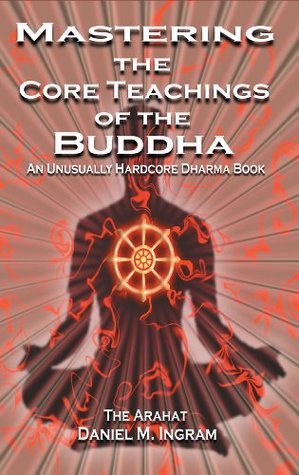More on this book
Community
Kindle Notes & Highlights
Read between
August 26 - August 26, 2018
You could throw out all of the spiritual trappings on the Buddhist path and still have a set of basic practices that lead to the effects promised. You could also keep all of the spiritual trappings, do the basic practices, and produce the same results, assuming of course that you had the extra time and resources necessary to do both.
Basically he was saying, “Get to know your actual reality really, really, really well, and try to do right by yourself and the world.”
The essential point about meditation is this: to get anywhere in meditation you need to be able to really steady the mind and be present. That’s just all there is to it and it is largely a question of just doing it. There is an important shift that happens in people’s practice when they really make the commitment to developing concentration and follow through with it. Until one does this, not much is likely to happen in one’s meditative practice! If you decide to do a concentration practice, stay on that object like a rabid dog until you have enough stability and skill to let the mind rest on
...more
the essential formal insight meditation instructions are: find a place where the distractions are tolerable, pick a stable and sustainable posture, and for a defined period of time notice every single sensation that makes up your reality as best you can. Just as with concentration practices, more time and more diligent practice pays off. These simple instructions can easily seem overwhelming, vague or strangely trivial to many people, and so I am going to spend a lot of time laying out a large number of empowering concepts and more structured practices that have helped countless practitioners
...more
If you can perceive one sensation per second, try for two. If you can perceive two unique sensations per second, try to perceive four. Keep increasing your perceptual threshold in this way until the illusion of continuity that binds you on the wheel of suffering shatters. In short, when doing insight practices, constantly work to perceive sensations arise and pass as quickly and accurately as you possibly can.
These objects and postures are not that important, but understanding impermanence directly is. In one of these exercises, I sit quietly in a quiet place, close my eyes, put one hand on each knee, and concentrate just on my two index fingers. Basic dharma theory tells me that it is definitely not possible to perceive both fingers simultaneously, so with this knowledge I try to see in each instant which one of the two finger’s physical sensations are being perceived. Once the mind has sped up a bit and yet become more stable, I try to perceive the arising and passing of each of these sensations.
...more
In another related exercise, I do the same sort of thing, sitting quietly in a quiet place with my eyes closed, but instead I concentrate on the sensations of the front and back of my head. With the knowledge that the illusion of a separate perceiver is partially supported by one impermanent sensation incorrectly seeming to perceive another impermanent sensation which it follows, such as the sensations in the back of the head incorrectly seeming to perceive the sensations of the front of the head which they follow, I try to be really clear about these sensations and when they are and aren’t
...more
In another exercise, which is quite common to many meditation traditions, I sit quietly in a quiet place, close my eyes, and concentrate on the breath. More than just concentrating on it, I know that the sensations that make up the concept “breath” are each impermanent, lasting only an instant. With this knowledge, I try to see how many individual times in each part of the breath I can perceive the sensations that make up the breath. During the in-breath I try to experience it as many times as possible, and try to be quite precise about exactly when the in-breath begins and ends. More than
...more
In the last exercise, I take on the thoughts directly. I know that the sensations that make up thoughts can reveal the truth of the Three Characteristics to me, so I have no fear of them; instead I regard them as more glorious opportunities for insight. Again, sitting quietly in a quiet place with my eyes closed, I turn the mind to the thought stream. However, rather than paying attention to the content like I usually do, I pay attention to the ultimate nature of the numerous sensations that make up thoughts: impermanence. I may even make the thoughts in my head more and more intense just to
...more
It is absolutely essential to try to figure out how you experience thoughts, otherwise you will simply flounder in content. What do thoughts feel like? Where do they occur? How big are they? What do they look like, smell like, taste like, sound like? How long do they last? Where are their edges? Only take on this practice if you are willing to try to work on this level, the level that tries to figure out what thoughts actually are rather than what they mean or imply.


